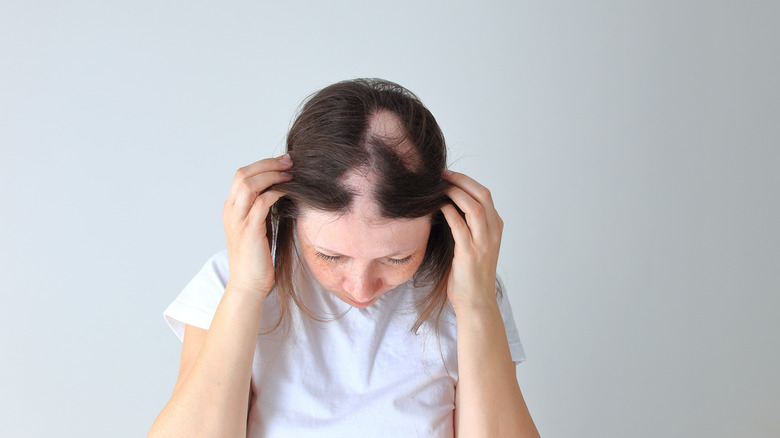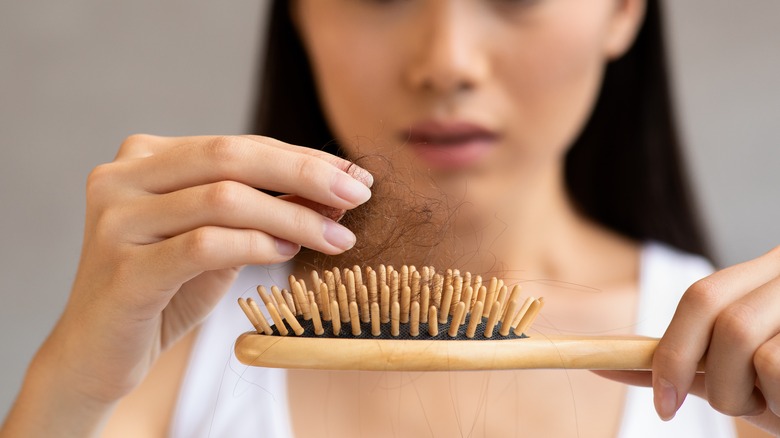The First FDA-Approved Alopecia Drug Shows Promising Results
Each year, about 300,000 people in the United States develop alopecia, which is a disorder that causes hair loss. In the past, injections or topical creams were used to treat the symptoms of alopecia. However, the U.S. Food and Drug Administration recently approved the first pill that can successfully treat severe alopecia, which is great news for people with the condition (via U.S. News). The name of the drug is Olumiant (baricitinib), and it works by treating the entire body instead of just the location where hair loss has occurred. Alopecia is an autoimmune disorder and this drug interferes with the cellular pathway that causes the inflammation.
Potential side effects of Olumiant include headache, acne, high cholesterol, upper respiratory tract infections, and fatigue. Users may also experience urinary tract infections, liver enzyme elevations, anemia, inflammation of hair follicles, abdominal pain, shingles, and weight gain. This medication should not be taken with other JAK inhibitors or immunosuppressants. If you talk to your doctor about taking this medication, be sure to be honest about your medical history and any medications or supplements you are currently taking.
What to know about alopecia
There are many different types of alopecia, and each one has its own set of causes and symptoms. Some of the most common forms of this condition include alopecia areata, androgenetic alopecia, and telogen effluvium (via American Academy of Family Physicians). Alopecia areata is characterized by round, patchy bald spots on the scalp or other areas of the body. It is thought to be caused by an autoimmune reaction, where the body's immune system attacks the hair follicles.
Androgenetic alopecia is the most common form of alopecia, and is also known as male- or female-pattern baldness. It is caused by a combination of genetic and hormonal factors, and typically results in a gradual thinning of the hair on the scalp (via Healthline). Telogen effluvium is characterized by temporary shedding of the hair, which is usually triggered by a stressful event such as childbirth, surgery, or a major illness. While there is no cure for alopecia, there are treatments that can help to improve the appearance of the hair and prevent further hair loss. These include topical medications, oral medications, light therapy, and surgery.


